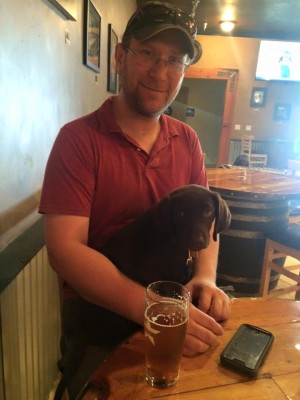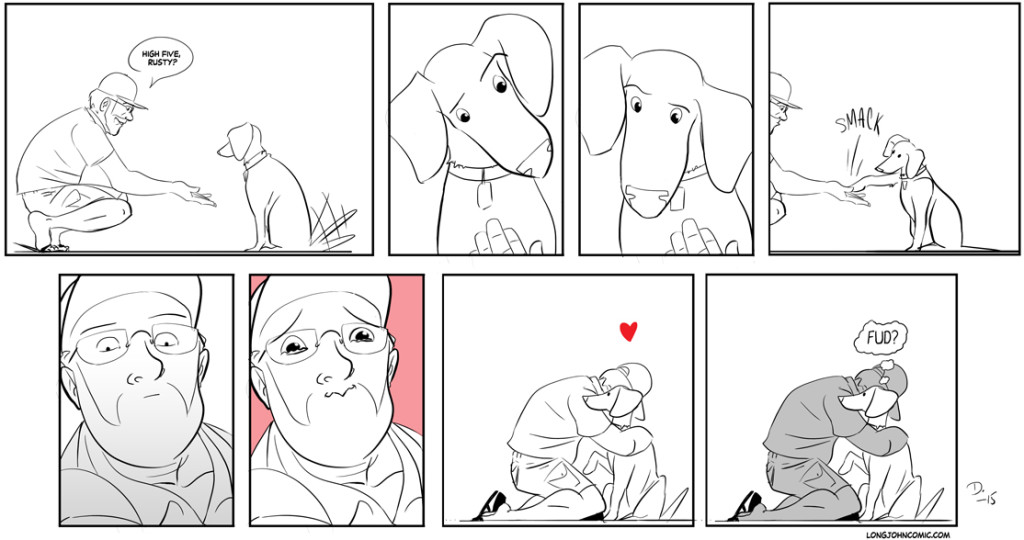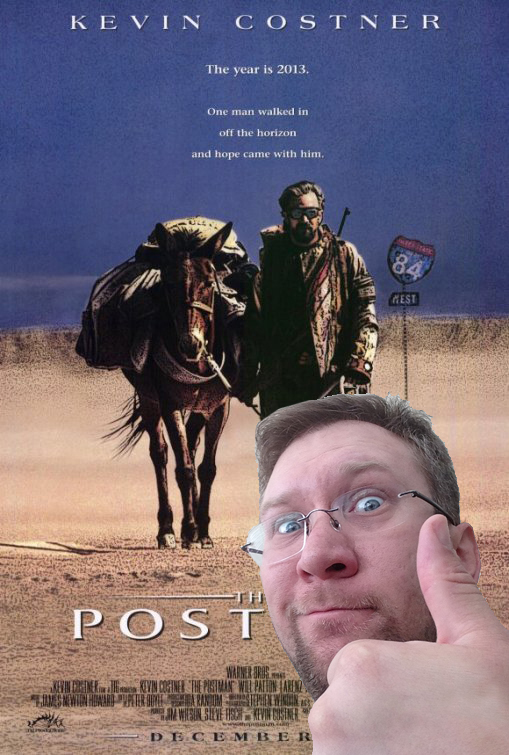My summer has been busy, not the least part of which was the addition to my household of a puppy named Rusty. Based on my history, I would not be what one calls a “dog person,” though I have nothing against dogs at all––I like my time with dogs, it encouraged my desire to get one––I am more of a “cat person.” They are amenable to my personality and temperament: quiet, calm, relatively slow-moving.
With that in mind, it is no surprise that the recent addition of one Rusty Dog to our household (named after Rustin Cohle from True Detective, season 1; also, his coat is a rust reddish brown) has caused a bit of a schism in what had become “normal” life. Having not been around a puppy for decades, I found the learning curve (on both sides of the leash) fascinating, tiring, frustrating, exhausting, infuriating, offensive, illogical, horrifying, etc., etc.
We got the basic training down; Rusty can sit, lay, and (occasionally) off. But, for some reason, during a recent obedience class, the teaching of a simple trick, taught to us as “shake” though I have done my best to convert it to “high five” (though it is clearly a “down low,” but it’s too late now), hit me in the emotional core of my being. And so, I drew a comic about it.
In the interest of full disclosure, the real incident that inspired the above comic was a little different than depicted. Both my wife and I attend the obedience classes with Rusty. The week that “shake” was taught, my role was as an anchor point for Rusty––holding his leash and sitting on a stool––as Nicole worked with him on various commands. It was over the span of about five minutes when Rusty went from a non-shaking dog to one that was hoisting his paw every chance he got that I became a little overwhelmed by literally watching a sentient entity learn in front of my eyes. Perhaps it was my background as a teacher that bolstered my emotional reaction, but seeing such a change––an ostensible exhibition of reason and logic––over a short amount of time hit me hard. I know it’s basic Pavlovian response, but it’s fascinating watching a dog assess his situation, his eyes darting from hand to hand to face and eyes, putting the puzzle together. So, panels five and six are probably the most accurate panels in the entire cartoon.
I may not have been a dog person going into this––and, in truth, I may not yet be an all-in dog person––but little moments like this are really helping open up those doors.

Dan & a very young Rusty. And a beer. And my grandpa’s smile (it freaks me out; I don’t normally smile like that).


